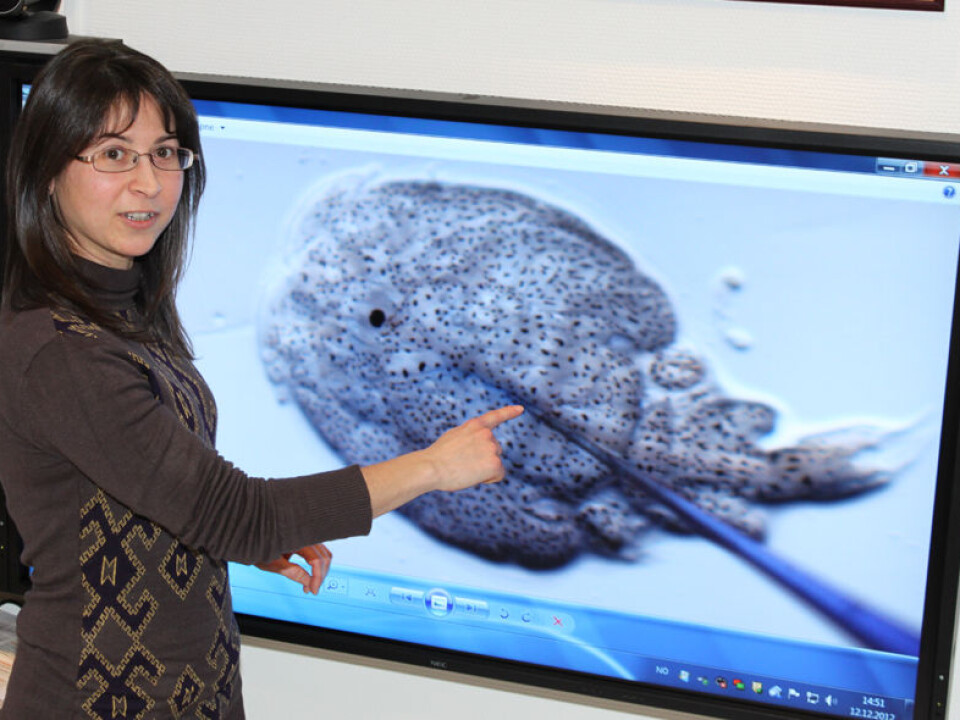This article was produced and financed by The Norwegian Veterinary Institute

Fighting parasites with parasites
Sea lice can live well on fish blood since they are resistant to the salmon’s immune system. Now scientists will supply the fish with the parasites’ own defense system.
Denne artikkelen er over ti år gammel og kan inneholde utdatert informasjon.
Sea lice are ectoparasites that suck blood from their victims. They represent a major problem for the fish farming industry.
Scientists from the Norwegian Veterinary Institute are now working on a vaccine that will empower the salmon's immune system, so that it becomes more effective and kill the parasites.
Celia Agusti-Ridaura from the University of Valencia in Spain, who currently works at the Norwegian Veterinary Institute, explains that in principle, the salmon has a pretty good defense against pathogenic microbes. The blood of the salmon contains a number of active immune molecules, such as an important network of factors called the complement system.
When lice feed on the blood of fish, the complement in fish blood should have a corrosive effect on the intestinal wall of the parasite. Unfortunately, lice seem to have its own defense systems that inhibit the immune effect of salmon blood.

Thus, the parasite can eat salmon blood without getting a "stomach ache.
Problem food for lice
"If a vaccine can neutralize these defense molecules in the parasite, salmon blood will become a 'problem food' for lice," says Agusti-Ridaura.
Vaccine developers hope to find and isolate these defense molecules in the parasite and use them in a vaccine. Exposing salmon to a component of the parasite's own defense system will enable salmon to produce antibodies against the defenses of sea lice.
When the parasite eats blood from vaccinated salmon, it will also get a bellyful of antibodies against its own defense system. In that way the parasite defense mechanisms can be put out of action. Thus, the salmon's own immune molecules efficiently and unhindered can deal with the parasite from within. That's the plan.
"To get there, there is still a lot of work to be done," says Agusti-Ridaura.
Finding defense molecules
The first challenge is to identify and isolate the molecules from the parasite's defense system. The researcher thinks they have found one of the key molecules that they have been looking for. The molecule has now been put into a vaccine that is being tested out at The Institute of Marine Research.
"We are now midway in this experiment and very excited about the outcome," she says.
"We believe that the technique can be transferred to fight other blood-sucking parasites, and have already been in contact with the salmon industry in Chile to look at the opportunity to fight the lice variant there with the same method."
Agusti-Ridaura believes that a vaccine based on this method might work to fight the so-called Sparicotyle chrysophrii, a parasite similar to Gyrodactylus that is a problem for the Spanish fish farming industry. She also hopes that this vaccine approach could be employed to fight ectoparasites of land animals, for example blood-sucking lice of domestic animals.
-------------------------
Read the Norwegian version of this article at forskning.no

































